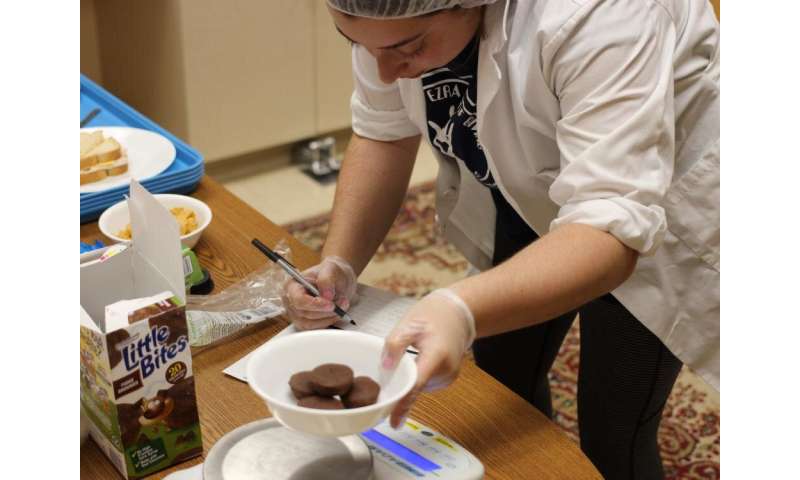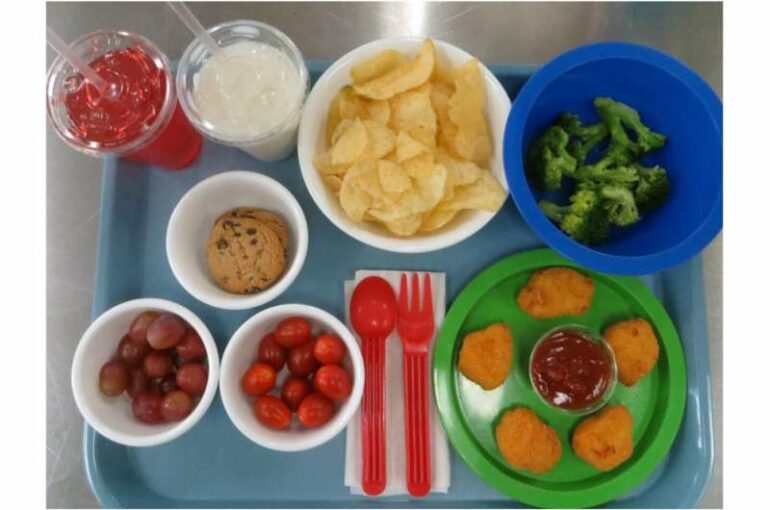It is often said that “children eat what they like,” but the results of a new study by Penn State nutritionists and sensory scientists suggests that when it comes to meals, it is more accurate and more relevant to say, “children do not eat what they dislike.”
There is an important difference, according to lead researcher Kathleen Keller, associate professor in the departments of Nutritional Sciences and Food Science, who conducted an experiment involving 61 children ages 4-6 years to assess the relationship between their liking of foods in a meal and subsequent intake. The research revealed that when presented with a meal, disliking is a stronger predictor of what youngsters eat than liking.
“In other words, rather than high-liking driving greater intake, our study data indicate that lower-liking led children to avoid some foods and leave them on the plate,” she said. “Kids have a limited amount of room in their bellies, so when they are handed a tray, they gravitate toward their favorite thing and typically eat that first, and then make choices about whether to eat other foods.”
Study co-author John Hayes, professor of food science and director of the Sensory Evaluation Center in the College of Agricultural Sciences, puts it another way.
“For 50 plus years, we’ve known liking and intake are positively correlated, but this often leads to the mistaken assumption that if it tastes better, you will eat more,” he said. “Reality is a bit more nuanced. In adults, we know that if you really like a food, you may or may not eat it. But if you don’t like it, you’ll rarely or never eat it. These new data show the same pattern is true in young kids.”
Children participated in two identical laboratory sessions in the study conducted in Keller’s Children’s Eating Behavior Laboratory in the College of Health and Human Development, where seven foods—chicken nuggets, ketchup, potato chips, grapes, broccoli, cherry tomatoes and cookies—were included on a tray. Also included were two beverages, fruit punch and milk.
Before eating the meals, children were asked to rate their liking of each food on the following five-point scale—Super Bad, Bad, Maybe Good-Maybe Bad, Good and Super Good. After the children had eaten as much of the meal as they wanted, the researchers weighed what they ate and compared the results with what the kids said they liked and disliked. The correlations were striking.

Before eating the meals, children were asked to rate their liking of each food on a five-point scale. After the children had eaten as much of the meal as they wanted, the researchers weighed what they ate and compared the results with what the kids said they liked and disliked. © Penn State
In findings recently published in the journal Appetite, the researchers reported that the relationship between liking and intake was not strong for most of the foods. For instance, only liking for potato chips, grapes, cherry tomatoes and fruit punch was positively associated with the amount consumed. But no associations were found between liking and intake of other meal items.
However, there was a strong correlation between consumption—or nonconsumption in this case—and the foods the children said they didn’t like. At a multi-component meal, rather than eating what they like, these data are more consistent with the notion that children do not eat what they dislike, the researchers concluded.
Even at a young age, children’s food choices are influenced by their parents and peers, Keller pointed out. So, we need to be careful with assumptions about what truly is driving their behavior when they sit down to eat a meal.
“They pick up on what is said around the table about what foods are good, and while that may not actually correspond to kids eating them, they are taking it all in, and that’s affecting their perceptions of foods,” she said. “Milk is a good example of that—for some families, there may be a health halo effect around milk. Kids learn from an early age that drinking milk will give them a strong body, so they may drink milk even if it’s not their favorite beverage.”
Because children in the United States continue to consume insufficient amounts of vegetables, the findings of research projects such as this one are of great interest to parents, many of whom struggle to get their kids to eat vegetables, Keller believes. Parents want to know how they can improve their kids’ nutrition.
“Some parents struggle with kids who are very picky eaters,” she said. “That can cause long-term nutrition issues and creates a lot of stress for the family. I think picky eating is one of the most common complaints that I hear from parents—’How do I get my child to accept more foods? How do I make the dinner experience better and easier for my family?'”
Also contributing to this research were Catherine Shehan, a former graduate student in the Department of Food Science who is currently a quality manager at Epic in Madison, Wisconsin; Terri Cravener, research coordinator and manager of the Children’s Eating Lab at Penn State; and Haley Schlechter, nutritional sciences major.
More information:
Kathleen L. Keller et al, Do children really eat what they like? Relationships between liking and intake across laboratory test-meals, Appetite (2022). DOI: 10.1016/j.appet.2022.105946
Provided by
Pennsylvania State University
Citation:
Children eat what they like, but food intake driven more by what they dislike (2022, February 22)



